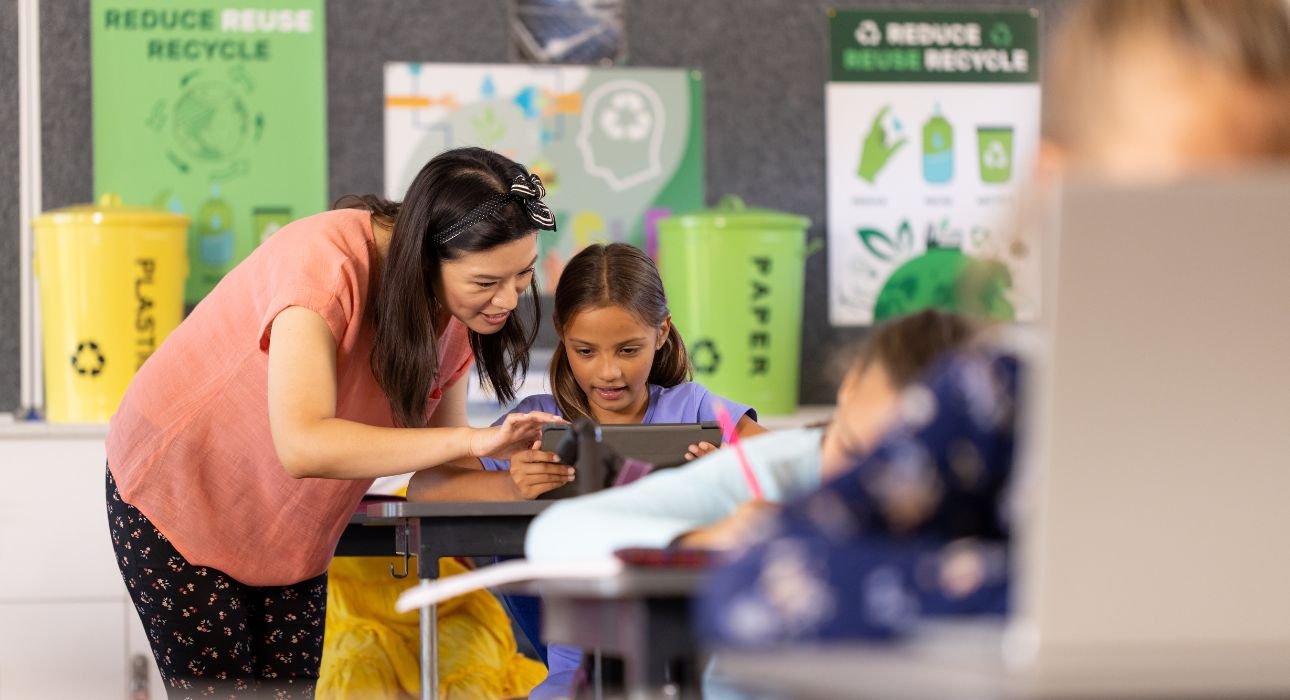In today’s world, people are becoming more competent and hardworking, as a result, increased stress and challenging situations, such as exam pressure, competition for top ranks, social challenges, and other academic stress. Schools are not only centres of growth but also powerhouses of these tiring yet significant aspects of our development. Therefore, children need to be mentally strong, as well as emotionally prepared, to tackle such factors with ease.
According to the World Health Organisation in 2021, over the past few years, many adolescents have been enduring mental disorders, and now the number is increasing. The emotional side should be addressed through new mediums like these programs.
Incidentally, some children are not significantly affected by academic pressure. Although they may fail at times, they consistently strive to do their best in future attempts with an optimistic attitude. The resilience programs in schools can be claimed as one of the most helpful resources to support children’s mental health and development. These curated programs make children capable of overcoming every hurdle, stress, and the realisation of internal tools to fight back against setbacks.
Read more: Academic Pressure and Its Effect on The Mental Health of Students
What is Resilience?
In one study, resilience is counted as one of the qualities that enables people to cope gracefully with difficulties, while others defined it as a dynamic process in which people are attuned to favourable behaviours in risky situations (Llistosella M, Goni-Fuste B, et al., 2023). Masten, A. S. (2014) stated in the “Ordinary Magic: Resilience in Development” book, resilience is not an inborn trait; one can learn from the experiences. If children mindfully reflect on some adverse incidents, they can bounce back fearlessly, and this helps inculcate resilient behaviours, attitudes, and actions forever. These behaviours help us to become confident, mentally stable, and problem solvers. By teaching this coping mechanism, children can manage stress.
Read More: The Psychology of Resilience
The Need for Resilience Programs in Schools
Children are exposed to many things, some of which are beyond their maturity level, through social media and gaming culture, which can introduce them to a toxic world. Terms such as comparison, stress, “winning is important,” and obsession with status have become popular. Millennial parents, be cautious! The stressors are entered into children’s lives. Psychological burden is also increasing because of the above factors.
Schools are the foundation of how our children are gonna be in the future, so it is an important place to start resilience training where overall development can be fostered. The open conversation with parents and teachers can influence the children to give importance to their emotional regulation. A successful school program can be a step forward in promoting mental health awareness, rather than just talking about it or worrying about what might happen if the issue grows more serious.
Read More: Social Emotional Learning
Components of a Resilience Training Program
1. Strength-Based Approach
Children thrive in schools where they learn, make friends, experience both failure and success, and build connections with teachers. Positive psychology believes in the strengths and good qualities of the person. This approach has been adopted in the program by actively providing resources, social support, and appropriate encouragement to help children focus on areas where they can excel. Through these positively driven actions, the promotion of overall well-being is emphasised (CAHILL, H., Beadle, et al., 2014).
Read More: What is positive psychology and how can it helpful for us?
2. Whole-School Approach
Research says that a whole-school approach is multifaceted in structure, where they are supposed to make alterations at organisational and classroom levels. By making the children realise the fact that their surroundings influence overall health. In a small number of students in classrooms, they try to foster a friendly environment, also managing to adapt disciplinary policies. Along with such other features, they allow students to make good relations with teachers, other students, and they teach students to recognise if anyone is bullying (CAHILL, H., Beadle, et al., 2014).
Read More: Sustaining Motivation among Students in Virtual Classrooms
3. Adaptation of Social and Emotional Curriculum
Regular studies are the default in the curriculum; everyone is bound to their compulsions, but emotional and social progress is also essential, which is highlighted in a specially designed syllabus. Many studies have proven that this can improve academic performance as well as cognitive abilities (CAHILL, H., Beadle, et al., 2014).
4. Promoting Teacher-Student Relationships
Adults want their children to be seen but not heard, especially in traditional teacher-child relationships teacher has been playing the leading role, where only she can decide and demand. But, in this approach, this relationship may get air to breathe, and an open and frank environment is followed by them to increase the student’s engagement. Validating our students’ emotions, needs, efforts, and respect is taken into account (CAHILL, H., Beadle, et al., 2014).
“The teacher appreciated me for being her helping hand.”
“Today, my teacher talks to me.”
Surely, such feelings have you all experienced once in life. These little things are effective in children’s lives.
Read More: Positive self-talk from approach motivation boosts resilience
Examples of Resilience Programs in Practice
1. The Penn Resilience Program (PRP)
It is established under the University of Pennsylvania, PRP. They utilised Cognitive-behavioural techniques to help students in teaching how to strategise stress management and remain positive (Gillham et al., 2007).
2. MindUP
It is developed by the Hawn Foundation. They focus on mindfulness techniques and social-emotional learning. It enables self-awareness and emotional regulation (Schonert-Reichl et al., 2015).
3. Bounce Back!
Positive psychology is the basis of this approach. And, an Australian program for primary school students, Bounce Back! Uses stories, cooperative learning, and reflection to teach coping strategies and positive thinking (Noble & McGrath, 2015).
Read More: Building a Strong Mind: Practical Steps for Enhancing Psychological Resilience
Conclusion
In modern times, this training module is important to prepare students to face all known, unknown pathways without a second doubt. Because this brings clarity and realisation that health is the topmost priority. They worked on mental health, academic growth, and emotional regulation. These efforts are not temporary; they produce long-term effects, cultivate more positive traits like empathy, toughness, confidence, assertiveness, and fearlessness.
FAQs
1. What are examples of resilience in school?
- Being positive in challenging situations
- Trying over and over again
- Constructive approach to our failures
- Cultivating optimism
- Validating emotions
2. What is resilience for kids?
Bouncing back when you lose a competition or earn fewer marks. Making strong friendships without comparing what we have. Helping each other if anyone is injured while playing. Participate in every activity but are aware of their strengths.
3. How do teachers show resilience?
It is an important aspect of the education system because teachers’ resilience may affect students. Teachers manage their stress by looking after their emotional and physical well-being.
References +
1. American Psychological Association. Resilience.
2. World Health Organisation (2021). Adolescent Mental Health. Available online at: https://www.who.int/news-room/fact-sheets/detail/adolescent-mental-health (accessed September 14, 2022).
3. Llistosella M, Goni-Fuste B, Martín-Delgado L, Miranda-Mendizabal A, Franch Martinez B, Pérez-Ventana C, and Castellvi P (2023) Effectiveness of resilience-based interventions in schools for adolescents: a systematic review and meta-analysis. Front. Psychol. 14:1211113. doi: 10.3389/fpsyg.2023.1211113
4. Masten, A. S. (2014). Ordinary magic: Resilience in development. The Guilford Press.
5. CAHILL, H., Beadle, S., Forster, R., Smith, K., & Farrelly, A. (2014). Building resilience in children and young people: A Literature Review for the Department of Education and Early Childhood Development (DEECD). Victorian Department of Education and Early Childhood Development (DEECD).
6. Gillham, J. E., Reivich, K. J., Freres, D. R., Chaplin, T. M., Shatté, A. J., Samuels, B., … & Seligman, M. E. P. (2007). School-based prevention of depressive symptoms: A randomised controlled study of the effectiveness and specificity of the Penn Resiliency Program. Journal of Consulting and Clinical Psychology, 75(1), 9–19. https://doi.org/10.1037/0022-006X.75.1.9
7. Noble, T., & McGrath, H. (2015). Bounce Back! A wellbeing and resilience program. Pearson Australia.
8. Schonert-Reichl, K. A., Oberle, E., Lawlor, M. S., Abbott, D., Thomson, K., Oberlander, T. F., & Diamond, A. (2015). Enhancing cognitive and social-emotional development through a simple-to-administer mindfulness-based school program for elementary school children: A randomised controlled trial. Developmental Psychology, 51(1), 52–66. https://doi.org/10.1037/a0038454













Leave feedback about this